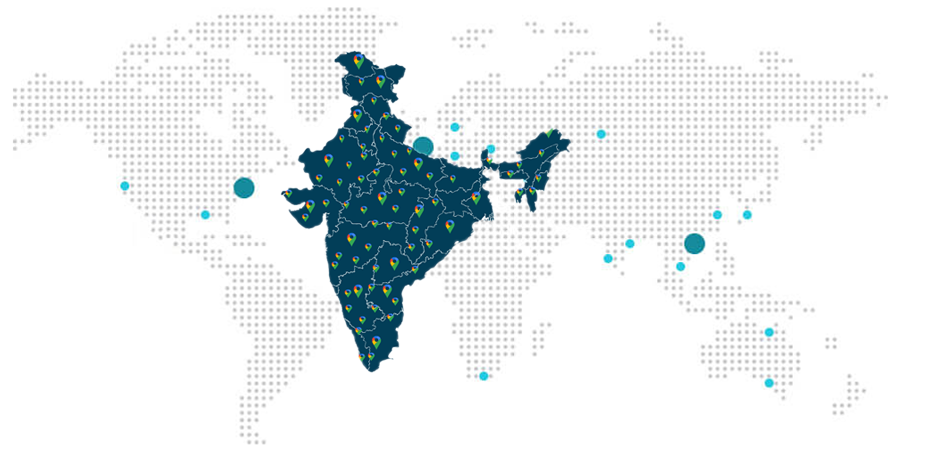Income tax Return Form
Categories
ITR 1 Form
It is a form of one page for those persons whose total income is around Rs. 50 lakhs from the sources given below:
The ITR 1 form has following structure
TDS Schedule: Information of TCS/TDS
IT Schedule: Information of payments of Self-Assessment and Advance Tax
Part E: Other Details
Part D: Calculation of Payable Tax
Part C: Total taxable income and deductions
Part B: Total Gross Income
Part A: General Details
What is the procedure of filing form ITR 1?
You can file form ITR 1 either offline or online.
Offline:
During the previous year, a person having age more than 80 years or around 80 years.
An HUF or individual whose total income is not more than Rs. 5 Lakhs and return is not claimed by him or her in the income tax return.
The return is file in a form of physical paper. An acknowledgement slip is issued to you by the department of income tax during the submission of return of physical paper.
Electronically/Online:
By electronically data transmission and then submission of return verification in ITR-V form to CPC, Bangalore.
By online return filing and electronically verify the return via EVC/Aadhar OTP/Net banking.
ITR 2 Form
This form is designed for HUF and individuals getting income rather than ‘Profits and Gains from Business or Profession” income. To file the ITR 2 form, persons having income from below sources are entitled to file this form.
The ITR 2 form has following structure
Part A: General Details
Part B-TI: Total Income Computation
Part B-TTI: tax liability computation on income total
If the Tax Return Prepare prepares the return then following details need to be filed:
ITR 4 Form
This form is form of return of income tax for those taxpayers who according to section 44AD, section 44AE and section 44ADA of the act of income tax have chosen the scheme of presumptive income. If the annual turnover of the business is more than Rs. 2 crores, then ITR 3 needs to be filed by the tax payer.
What is the ITR 4 form structure for Assessment year 2017-18 and assessment year 2018-19?
The structure of ITR 4 form is following:
AL Schedule: liability and asset at year end (it is applicable when total income is more than Rs. 50 lakhs)
ITR 4S Form
From the assessment year 2017-18 and the financial year 2016-17, the ITR 4S form is discontinued. If for financial year 2015-16, you file electronically ITR 4S then you have to file form ITR 4.
The form ITR 4S is the form for return of income tax for those taxpayers who have selected the scheme of presumptive income according to the section 44AE and section 44AD of the act of Income tax. If the annual turnover of the business is more than Rs. 2 crores, then taxpayer need to file form ITR 4.
For the financial year 2016-17, the due date of filing form ITR 4S is 31st July 2017.
Under section 44AD taxation of presumptive income and income presumptive
When you are the owner of a small business, then to compute your loss or profit or managing the right information of accounting you do not have proper resources. Therefore, it is not easy to tracking income from your business and calculation of total tax which you require to pay.
Therefore, the department of income tax has created some regulations where based on your business gross receipts your income is computed. This procedure is known as presumptive method and you require to pay estimated tax.
ITR V Form
During e-filing of return of income tax, this form is need to be submitted.
What is meant by ITR V?
ITR V means return of income tax. It is a one-page document and a concise summary of your return of income tax and you get this form only when you online file your return of income tax without deploying the digital signature.
Depart of income tax send this form to you to confirm the e-filing validity.
Form ITR V Guidelines
Form 15G
Form 15G is that form which you need to submit to ensure that on your income TDS is not deducted and it is depend on certain conditions which you need to fulfill. Before apply for this form, you need to have a PAN card.
Most of the banks permits this form for online submission via the website of the bank.
This form is valid for a financial year. If you are eligible, then you need to submit this form each year. You need to ensure that after the beginning of financial year, you submit this form quickly, therefore the TDS is not deducted by the bank on your income of the interest.
To submit form 15G, you need to fulfill following conditions:














